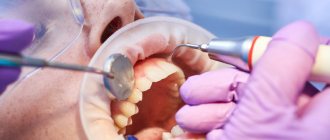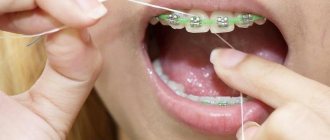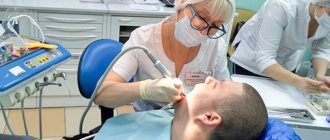People have been suffering from progressive dental problems since ancient times. In this regard, they tried to relieve pain using different methods. Previously, they were not the most humane, but over time dentistry has developed. Modern knowledge and skills of doctors are enough to keep teeth in good condition and not let their health lead to frightening complications. However, it is often possible to encounter situations where the human oral cavity is inhabited by parasites, otherwise known as worms.
Myths about the toothworm
So, let's turn to history. Ancient Sumerian cuneiform tablets have been found on which an unknown author reproaches the gods for the appearance of tooth-eaters. The worm was mentioned by Babylonian doctors and healers of Ancient China. The parasite was familiar to scientists of the Arab East, physicians of the pharaohs and Indian shamans.
Greece became the first country where, thanks to Hippocrates, the doctrine of a worm in a person’s teeth was transferred to the section of myths. Other cultures continued to believe in this parasite until the 18th century.
They tried to expel the worms in different ways. It was believed that moonlight was fatal to them. Therefore, at night, many sufferers climbed onto the roofs of houses and sat there with their mouths open. Frog fat was also considered a poison for the tooth beetle. Amphibians were mercilessly caught and killed. And as a preventive measure against worm infection, it was proposed to bite off the heads of live bats twice a month. The most adequate way to combat the disease is the use of enemas and laxatives.
In some cases, methods were used to kill parasites that could injure or kill the patient himself. For example, a rotten tooth with worms was poured with acid or hot wax. They also tried to burn it with a hot iron. Bird droppings or poisons were applied.
People endured terrible torture, but they were afraid to remove worm-infested teeth. It was believed that the brain would begin to flow out through the resulting hole. Even Hippocrates was sure that pain originates in the head and then goes down to the tooth. So deleting it won't help. If a tooth is missing, the pain will return to the head.
1.General information
Tapeworms, or cestodes, are one of the classes of many thousand-year-old taxon of worms, which over millions of years have almost perfectly adapted to a parasitic lifestyle in humans, animals and even plants. Three classes of such helminths (worms) are dangerous for humans. In addition to tapeworms, trematodes (flukes) and nematodes (roundworms) can also parasitize the human body - and in total there are, according to various sources, from 250 to 400 species of potential parasites, but in any case these are several hundred possible variants of helminthiasis.
Cestodoses (diseases caused by tapeworms) exhibit both features common to all helminthiasis and their own specificity.
Thus, tapeworms have a very complex, multi-stage life cycle, during which they usually change several hosts. However, this does not interfere, but, on the contrary, contributes to the very high adaptability and “survivability” of this parasite (in particular, worms of some species can, under unfavorable conditions, devour their own body, but the remaining 5-10% of it turns out to be quite viable and quickly recovers) . Helminths have lost their own digestive system during evolution - they simply do not need it, since they receive all the final nutrients in abundance directly from the host organism, literally sucking vital resources out of it (which explains the characteristic clinical picture). Tapeworms got their name due to the specific morphology of the mature individual: having attached itself, for example, to the intestinal wall, the tapeworm continuously grows from the neck, forming a kind of segmented “tear-off tape.” The mature posterior segments, called segments in parasitology, carrying huge quantities of fertilized eggs, are periodically evacuated with feces, in which they can be found in the form of disgustingly moving flatworms (white, gray-yellow or another shade).
A must read! Help with treatment and hospitalization!
How can worms get into teeth?
One of the first to discover microorganisms in the oral cavity and dentinal tubules was Antoine Leeuwenhoek. He refuted the tooth-eater theory. One day he was sent several worms, which were allegedly extracted from carious cavities. Leeuwenhoek used a microscope to prove that the resulting samples were identical to the larvae of those insects that live in overripe cheese. The scientist suggested that the person whose tooth was removed ate this product before the procedure. The patient's husband confirmed that she actually ate wormy cheese. Thus, the larvae ended up in carious cavities.
Thanks to the toothworm theory, many charlatans were able to get rich. Until the second half of the 19th century, Chinese healers operated in Moscow. They used hollow wooden hooks, inside which cabbage worms were previously placed. When a person with a toothache came to the healers, they picked their teeth with this tool for several minutes, then removed the worm and showed it to the amazed patient.
It has long been proven that it is not worms in teeth that cause the development of caries. However, parasites can enter the human mouth. These can be either tiny protozoa or real worms.
Oral amoeba
No worms were found in the teeth of patients who sought dental care due to caries. But in 95% of patients, a protozoan called oral amoeba is present in the oral cavity. Its Latin name is Entamoeba gingivalis. It is most often found in tartar, gum pockets and alveoli.
This creature is not a pathogen and does not cause harm to its owner. Although there are scientists who are of the opinion that amoeba is capable of mutating and causing inflammation of the central nervous system.
Entamoeba gingivalis enters the oral cavity through unboiled water, unwashed fruits and vegetables, as well as through a kiss or someone else's toothbrush.
The amoeba feeds on bacteria that form plaque and tartar. If your gums are bleeding, Entamoeba gingivalis can trap red blood cells.
You can get rid of the parasite if you maintain oral hygiene and seek dental care on time. You should also wash all fruits and vegetables before eating and use only clean drinking water.
Complications
The main and most common complications include a critical decrease in immune function and infection. The body becomes vulnerable to any viruses, bacteria, the functioning of organs and systems changes.
Under the influence of a lack of vitamin intake, absorption in the intestine is disrupted, a deficiency of B vitamins and anemia develop.
Irreversible disruptions to the functioning of the digestive system, nervous system, and urinary organs occur. Through the mucous membrane, helminths and protozoa easily enter the bloodstream, and therefore affect the kidneys, liver, and heart. If proper treatment is not carried out on time, death cannot be ruled out.
Parasites can also affect the eyelids and genitals.
Trichomonas
Oral Trichomonas is uncommon and is considered the least dangerous of all. Nevertheless, it must be disposed of in a timely manner to avoid possible negative consequences.
You can become infected with Trichomonas in the following ways:
- Using contaminated lip cosmetics or accessories to apply them.
- Through a sick person's toothbrush.
- Through poorly washed, contaminated spoons and forks.
The likelihood of infection increases if there is a violation of the integrity of the oral mucosa. For a long time, the disease can proceed hidden. Trichomonas does not correspond to the classical idea of worms in teeth, but is a parasitic organism that lives in the oral cavity and can cause the development of such pathologies:
- Purulent inflammation of the gums.
- Formation of ulcers and erosions on the mucous membrane.
- Curdled coating on the tongue.
- Swelling, itching and burning of the inner surface of the cheeks.
- Bad breath.
Adequate treatment should be prescribed by a doctor after diagnosis. The most commonly used drug is Trichopolum.
Sarcocystosis
You can become infected with sarcocystosis if you eat raw or undercooked thermally contaminated meat. Most often, a person suffers from the intestinal form of the disease. But more dangerous muscle infections can also occur.
Any muscle can be infected, including the chewing muscles. If this happens, the patient will begin to develop characteristic ulcerations on the gums, lips and mucous membrane of the soft palate. The lymph nodes will enlarge. The extracted parasites fully correspond to the ancient ideas about worms in human teeth. The photo of the sarcocyst confirms this. The exception is that they do not live in the teeth, but in the esophagus, gums or lips.
Gongylonematosis
A nematode can live under the oral mucosa. It is possible that in the past, it was he who was blamed for the development of caries and was mistaken for a worm in the tooth causing terrible pain. We will not attach a photo of this microorganism for aesthetic reasons, but the size of this monster is amazing; its length can reach 145 mm. The causative agent of the disease is the nematode Gongylonema pulchrum.
Infection can occur through accidental ingestion of a cockroach or dung beetle. And also with food or water contaminated with larvae.
At first, the disease is disguised as pharyngitis or stomatitis. Then zigzag passages and abrasions begin to appear on the oral mucosa, the gums become red and swollen. Papules appear, making it difficult to move the tongue. Gradually, the patient develops intoxication. The parasite can only be removed surgically.
4.Treatment
In the most severe cases (see above), urgent or emergency surgical intervention is necessary for life-saving reasons. In other situations, etiotropic treatment is carried out with anthelmintic drugs (self-medication is strictly excluded!), the spectrum of which at this stage is very wide, the action is selective and targeted, and side effects are minimized - which makes it possible to successfully and radically expel almost any helminth from the body. Important tasks, however, remain the exclusion of reinvasion (for this purpose, in some cases, examination and treatment of the entire family is prescribed with simultaneous sanitization of living conditions), as well as somatic and immune rehabilitation of the patient.
Oral myiasis
In countries with hot climates, real worms can settle in the gums. Deposits in teeth, wounds, ulcers, and irregular brushing contribute to rapid infection.
Some types of parasitic flies manage to lay eggs on the skin when they bite a person. Thanks to the warmth, they begin to ripen. The hatched larva tries to get to the area where the skin is as thin as possible or damaged. When a suitable place is found, it bites inside, where it grows and feeds. In the mouth, they are able to live in the gums, lips, cheeks and even the roof of the mouth.
The number of larvae can reach 300 pieces at a time. They can cause serious bleeding. Normal chewing of food causes unbearable pain to the patient. A person feels a twitching inside the gums. Bleeding ulcers gradually increase in size and emit an unpleasant odor. The patient becomes more lethargic and his body temperature rises. Even deaths have been recorded, as the larvae are able to migrate to other organs and damage them.
Prevention of parasites and mandatory medical preventive control
All of the listed pathologies are not so common in domestic dental practice. During consultations, dentists always warn patients that regular and proper brushing of teeth, as well as timely examinations, will help minimize the possibility of developing diseases. In order to never encounter worms in your teeth, you should follow these recommendations:
- Consult a doctor immediately if you are concerned about swelling or pain in your gums or lips.
- Do not eat meat and fish of questionable quality.
- Rinse fruits, vegetables and herbs thoroughly.
- Get rid of flies as soon as possible after they fly into the room. Do not eat foods that insects have sat on.
- Always maintain good oral hygiene.
- Do not use someone else's toothbrush, lipstick or lip brush.
- Always wash your hands, especially after visiting medical facilities and other public places.
If you follow all the recommendations listed, you can easily avoid exposure to oral parasites. In the event that, after visiting some exotic country, you feel as if something is moving in your gums, modern medicine can quickly cope with this problem.
3. Symptoms and diagnosis
No parasite has any "interest" in detecting its presence or, worse, in killing its host.
Cestoid invasion can be latent for a long time, asymptomatic, or with an imitation of the clinical picture of other diseases.
Flat tapeworms (for example, bovine tapeworm, pork tapeworm, broad tapeworm) can reach gigantic sizes in length - up to 8-10 meters - remaining unrecognized for a long time. There are cases where helminths were discovered only after the development of a clinical picture of mechanical intestinal obstruction and appropriate emergency intervention. However, today such cases in civilized countries are quite rare: cestoid infestations can be detected in the early stages.
Typical symptoms of cestodosis are nonspecific and are caused by three factors: mechanical damage to the intestine, intoxication with waste products of the parasite and an immune-allergic reaction. In the acute phase, it is the immune response to the antigens of the larvae that have entered the body that predominates: fever, muscle and joint pain, enlargement of the spleen and liver, edema, pneumonia, and sometimes meningoencephalitis can be observed.
The constant, chronic presence of parasites affects metabolism - body weight, performance, general immunity, the content of hemoglobin in the blood and the vitamins and microelements necessary for the body, which simply do not reach the owner, decrease. Psychoneurological symptoms can be significantly pronounced, which are usually associated with other, non-parasitic causes - or they simply find it difficult to qualify them as idiopathic pathology or refer the patient for further specialized examination to related specialists (which, of course, is more correct).
The question, repeatedly raised by parasitologists, about the possible carcinogenic effect of helminthic (in particular, cestodosis) invasion is investigated and discussed.
Echinococcosis is a very dangerous disease caused by the larvae of one of the tapeworms. With echinococcosis, closed, parasite-infested cysts are formed that can be present in the body for years, in some cases decades, until the sudden rupture of the cyst leads to rapid and most often catastrophic consequences.
Considering that the echinococcal colony can be localized in the liver, brain and spinal cord, lungs, kidneys, and occasionally in the heart or bone structures, it is not surprising that the release of cystic contents can cause fulminant (fulminant) meningitis, peritonitis, acute respiratory, renal and cardiac -vascular insufficiency, myocardial infarction and other severe complications up to and including sudden death.
Diagnosis of cestodosis involves coproscopy, i.e. detection of detached segments or migrating larvae during microscopic examination of stool, immunological tests, radiography (for example, hydatid cysts in a cold, asymptomatic phase are more often detected on an X-ray by chance, during an examination for another reason). In various situations (depending on what kind of parasite is supposedly present in the body), an analysis of blood, bile and other biological fluids, as well as serological tests visualizing instrumental methods, may be informative and appropriate.
About our clinic Chistye Prudy metro station Medintercom page!










